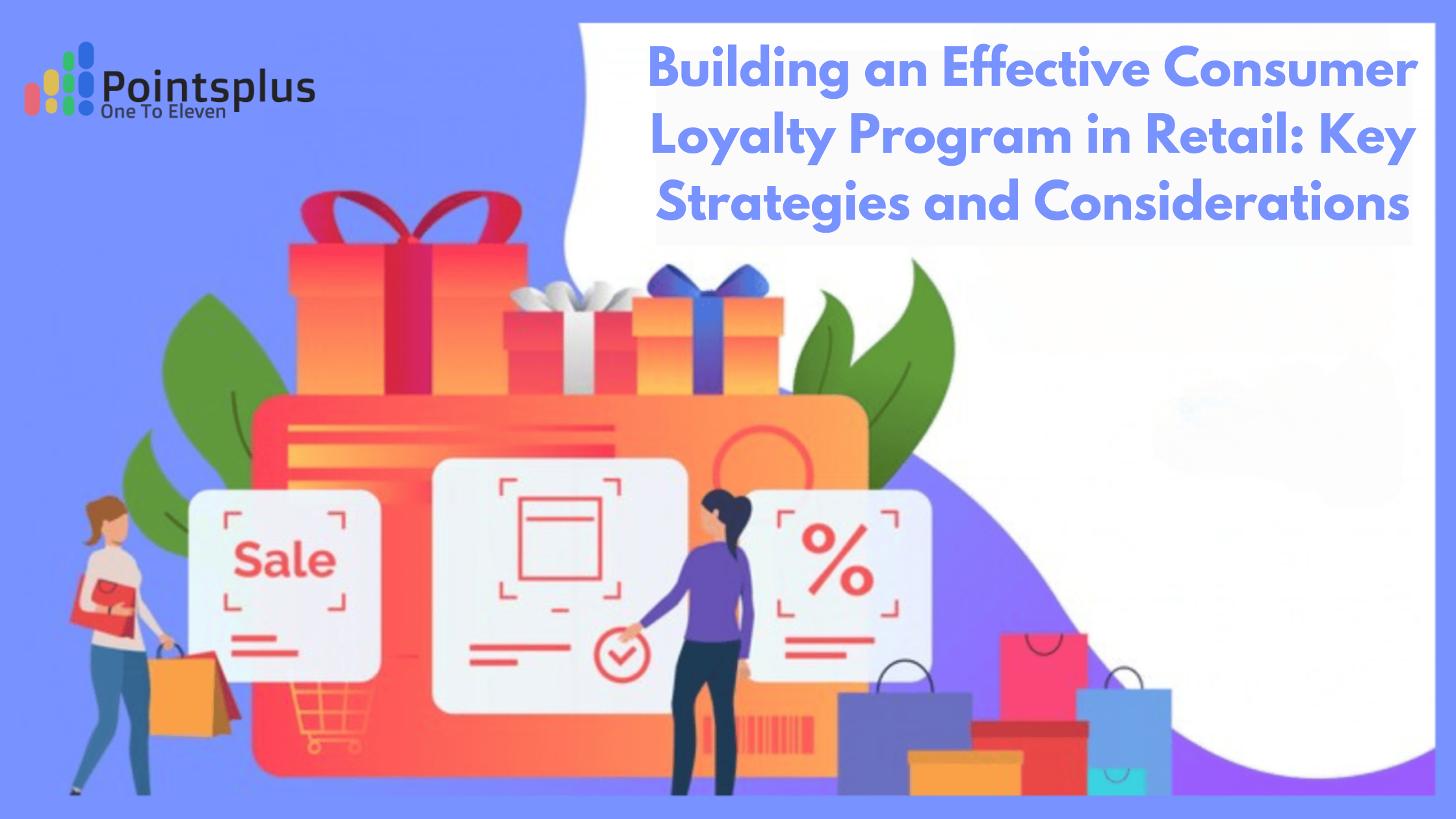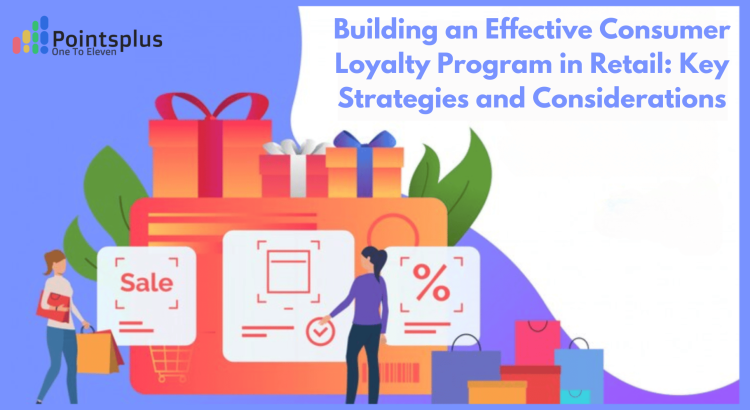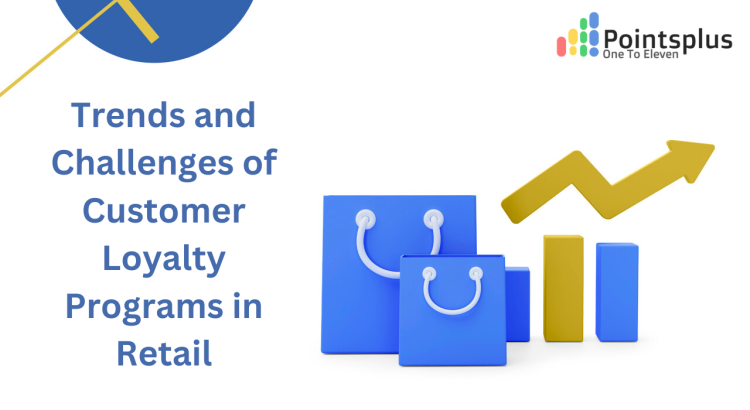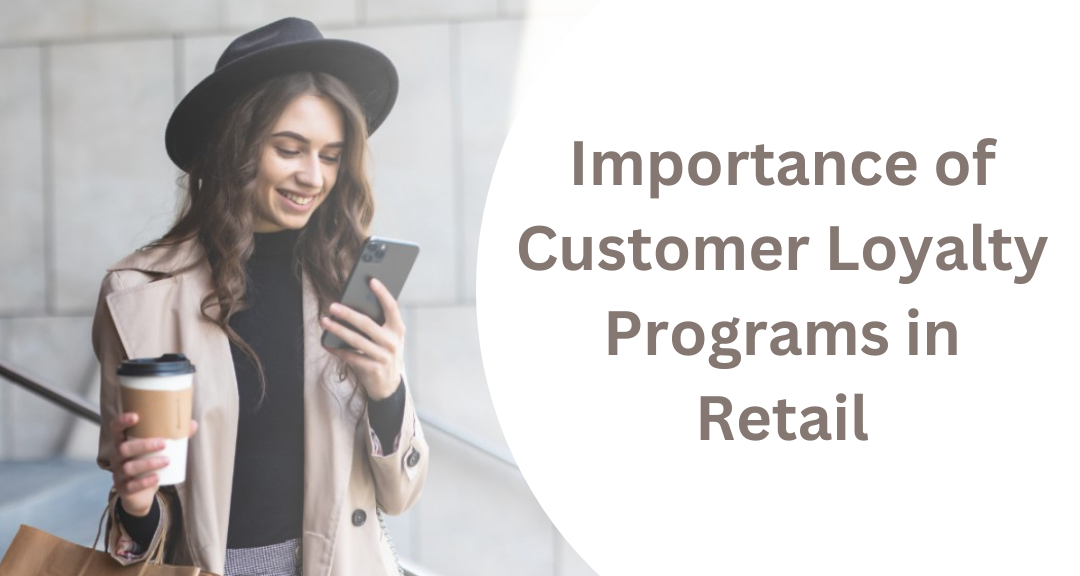Introduction
In today’s competitive retail landscape, customer loyalty has become a critical factor for sustained success. With the increasing proliferation of options available to consumers, businesses must find innovative ways to retain their customer base. One of the most effective strategies is the implementation of a robust Customer Loyalty Program. According to Gartner’s report, the widespread use of loyalty programs is a testament to their importance in the retail sector. This trend is driven by two primary forces: intense competition and prevailing economic challenges. To navigate these forces successfully, retailers must focus on key considerations for creating an effective Retail Customer Reward Management system.
The Growing Importance of Loyalty Programs in Retail
Loyalty programs have evolved from simple points-based systems to sophisticated Customer Loyalty Programs that offer personalized rewards and experiences. The growth in their adoption is reflective of their proven ability to enhance customer retention and increase lifetime value. Retailers are recognizing that a well-designed loyalty program can differentiate them from competitors, especially in a market saturated with choices.
Dual Forces Driving Loyalty Program Adoption
- Competition: The retail market is more competitive than ever, with both online and offline players vying for the attention of the same customers. A compelling Customer Loyalty Program can provide a significant edge by fostering brand loyalty and reducing churn. Retailers can leverage loyalty programs to create a more engaged customer base, who are likely to make repeat purchases and advocate for the brand.
- Economic Challenges: Economic downturns and uncertainties impact consumer spending patterns. During such times, customers are more inclined to seek value and rewards for their loyalty. Effective Retail Customer Reward Management can mitigate the impact of these challenges by offering incentives that encourage continued spending, even in tough economic conditions.
Characteristics of Loyalty Programs in the Retail Industry
Overview of the Retail Industry’s Market Value and Scale
The retail industry is a massive and dynamic sector, characterized by its extensive market value and scale. Globally, retail sales have consistently shown robust growth, contributing significantly to the economy. With billions of transactions occurring annually, the sector offers a fertile ground for implementing effective Customer Loyalty Programs. The sheer volume of customer interactions presents an unparalleled opportunity for Retail Customer Reward Management, allowing retailers to engage with a large and diverse customer base.
The Importance of Frequent Customer Contact
Frequent customer contact is a cornerstone of successful Customer Loyalty Programs. Regular interactions, whether through in-store visits, online purchases, or mobile app engagements, create numerous touchpoints for retailers to connect with their customers. These interactions are vital for building and maintaining customer relationships. By leveraging Retail Customer Reward Management, retailers can reward customers for their frequent interactions, thereby fostering loyalty and encouraging repeat business.
The Role of Multi-Channel Engagement in Modern Loyalty Programs
In today’s retail landscape, multi-channel engagement is crucial. Customers no longer interact with brands through a single channel; they shop online, in physical stores, and via mobile apps. Modern Customer Loyalty Programs must integrate seamlessly across all these channels to provide a cohesive and consistent experience. This multi-channel approach ensures that customers can earn and redeem rewards regardless of how they choose to interact with the brand. Effective Retail Customer Reward Management systems enable retailers to track and reward customer behavior across various channels, enhancing the overall customer experience.
Data-Driven Insights: Utilizing Frequent Transactions to Refine Loyalty Strategies
Frequent transactions generate vast amounts of data, which can be invaluable for refining loyalty strategies. Customer Loyalty Programs that leverage data-driven insights can more effectively meet customer needs and preferences. By analyzing transaction data, retailers can identify purchasing patterns, preferences, and trends. This information allows for more personalized and targeted Retail Customer Reward Management. For example, if data shows that a customer frequently purchases a particular product, the loyalty program can offer tailored rewards or discounts on that product, increasing the likelihood of continued engagement and loyalty.
Key Elements of Customer Loyalty Programs in Retail
A. Personalization
Importance of Understanding Demographics, Purchase History, and Preferences
Personalization is a critical element of any successful Customer Loyalty Program. To create a truly personalized experience, retailers must understand their customers’ demographics, purchase history, and preferences. This involves collecting and analyzing data to gain insights into customer behavior and preferences. By doing so, retailers can tailor their Retail Customer Reward Management strategies to meet the specific needs and desires of their customers.
Creating Targeted Recommendations and Personalized Promotions
With a deep understanding of customer data, retailers can create targeted recommendations and personalized promotions. This means offering products and rewards that are relevant to the individual customer, increasing the likelihood of engagement and satisfaction. Personalized promotions can include special discounts on frequently purchased items, birthday rewards, or exclusive access to new products. These targeted efforts enhance the overall customer experience and drive loyalty.
Emphasizing Responsible Data Use and Customer Appreciation
While personalization relies heavily on data, it is crucial for retailers to use this data responsibly. Customers are more likely to engage with a loyalty program if they trust that their information is being handled with care and respect. Retailers should be transparent about data usage and prioritize customer privacy. Additionally, showing appreciation for customers through personalized rewards and communications can strengthen the relationship and build long-term loyalty.
B. Point of Sale Integration for Omni-Channel Capabilities
Necessity of Integrating Loyalty Programs with POS Systems
Integrating loyalty programs with Point of Sale (POS) systems is essential for creating a seamless customer experience. POS integration allows for the automatic application of rewards and points during transactions, making it easier for customers to participate in the loyalty program without additional steps. This integration ensures that loyalty benefits are consistently applied across all sales channels.
Benefits of Real-Time Data Transfer and Automatic Transaction Tracking
Real-time data transfer and automatic transaction tracking are significant advantages of POS integration. These features enable retailers to capture and analyze transaction data instantly, providing valuable insights into customer behavior. Real-time tracking ensures that customers receive their rewards immediately, enhancing satisfaction and encouraging continued engagement with the loyalty program.
Ensuring Seamless Customer Identification Across Channels
A robust Retail Customer Reward Management system should ensure seamless customer identification across all channels. Whether a customer shops in-store, online, or via a mobile app, their loyalty program information should be easily accessible and consistently updated. This seamless integration creates a unified experience, making it easy for customers to earn and redeem rewards regardless of how they choose to shop.
C. Mobile App
The Mobile App as the Primary Contact Channel
In the digital age, mobile apps have become the primary contact channel for many customers. A dedicated mobile app for the Customer Loyalty Program offers convenience and accessibility, allowing customers to engage with the program anytime, anywhere. The app can serve as a central hub for managing rewards, tracking points, and accessing personalized offers.
Utilizing Push Notifications for Promotions and Offers
Push notifications are a powerful tool for engaging customers through the mobile app. Retailers can use push notifications to send timely promotions, special offers, and reminders about reward points. These notifications keep the loyalty program top of mind for customers and encourage frequent engagement.
Enhancing User Experience with Features Like Virtual Cards, Transaction History, and Additional Functionalities
A well-designed mobile app enhances the user experience by offering features like virtual loyalty cards, transaction history, and additional functionalities such as click & collect and mobile payments. Virtual cards eliminate the need for physical cards, making it easy for customers to access their rewards. Transaction history allows customers to track their purchases and points, providing transparency and fostering trust. Additional features like click & collect and mobile payments add convenience and further incentivize the use of the loyalty program.
D. Addressing Customer Expectations for Rewards
Importance of Offering Diverse and Valuable Rewards
To keep customers engaged and motivated, Customer Loyalty Programs must offer diverse and valuable rewards. These rewards can range from cashback and discounts to exclusive products and experiences. Offering a variety of rewards ensures that there is something for everyone, catering to different customer preferences and increasing overall satisfaction.
Balancing Reward Value with Engagement
While it is important to offer valuable rewards, it is equally crucial to balance reward value with customer engagement. Rewards should be attainable but also encourage continued participation in the loyalty program. This balance can be achieved by setting realistic thresholds for earning rewards and offering incremental benefits that keep customers motivated to engage regularly.
Tailoring the Rewards Catalog to the Industry and Customer Needs
The rewards catalog should be tailored to the specific industry and customer needs. Retailers should consider the types of products and services that their customers value most and align the rewards accordingly. For example, a fashion retailer might offer exclusive access to new collections, while a grocery store might provide discounts on popular items. By aligning rewards with customer interests, retailers can enhance the appeal of the loyalty program and drive higher engagement.
Advantages of Retail Loyalty Programs
Competitive Advantage Through Loyalty Programs
Implementing a well-structured Customer Loyalty Program can provide a significant competitive advantage in the retail industry. In a market where consumers have a multitude of options, a compelling loyalty program can differentiate a retailer from its competitors. By offering exclusive rewards, personalized offers, and unique experiences, retailers can create a stronger bond with their customers. Effective Retail Customer Reward Management helps in building brand loyalty, reducing churn, and increasing customer retention, which ultimately leads to higher sales and profitability.
Access to Valuable Customer Data
One of the most significant advantages of a Customer Loyalty Program is the access it provides to valuable customer data. Every transaction and interaction within the loyalty program generates data that can be analyzed to gain insights into customer preferences, purchasing habits, and behavior patterns. This data is crucial for Retail Customer Reward Management, as it allows retailers to tailor their marketing strategies, personalize offers, and improve customer experiences. By understanding what customers want and how they shop, retailers can make more informed decisions and stay ahead of market trends.
Real-Time Response to Customer Needs and Encouragement of Desired Behaviors
A robust Customer Loyalty Program enables retailers to respond to customer needs in real-time. Through advanced Retail Customer Reward Management systems, retailers can track customer behavior as it happens and adjust their strategies accordingly. For example, if a customer frequently purchases a specific product, the retailer can instantly offer a related discount or reward. Real-time data also allows for the prompt resolution of customer issues, enhancing overall satisfaction. Additionally, loyalty programs can encourage desired behaviors by offering rewards for specific actions, such as referring friends, writing reviews, or making repeat purchases.
Proactive Anti-Churn Strategies Based on Customer Behavior Analysis
Customer churn is a significant challenge in the retail industry, but Customer Loyalty Programs offer effective tools for proactive anti-churn strategies. By analyzing customer behavior, retailers can identify patterns that indicate a risk of churn, such as a decrease in purchase frequency or a drop in engagement. With this information, Retail Customer Reward Management can implement targeted interventions to re-engage at-risk customers. This could include personalized offers, exclusive promotions, or direct communication to address any issues. By addressing potential churn proactively, retailers can maintain a loyal customer base and reduce the costs associated with acquiring new customers.
The Strategic Importance of Building Customer Loyalty
Loyalty Programs as a Critical Component of Marketing Efforts
In the modern retail landscape, Customer Loyalty Programs have become a vital component of marketing strategies. These programs are designed to reward repeat customers and incentivize ongoing engagement, helping retailers build a loyal customer base. Effective Points and reward management ensures that customers feel valued and appreciated, which can significantly enhance brand loyalty and customer retention. By integrating loyalty programs into broader marketing efforts, retailers can create a cohesive strategy that drives both customer acquisition and long-term loyalty.
Securing Market Share Through Expected Customer Experiences
In a competitive market, providing consistent and expected customer experiences is crucial for securing and expanding market share. Customer Loyalty Programs play a pivotal role in meeting and exceeding customer expectations by offering personalized rewards and exclusive benefits. Through effective Retail Customer Reward Management, retailers can ensure that their customers consistently receive high-quality experiences that keep them coming back. This not only helps in retaining existing customers but also attracts new ones, thereby securing a larger market share.
The Intermediary Role of Retailers Between Manufacturers and Customers
Retailers serve as the crucial link between manufacturers and customers, and Customer Loyalty Programs can enhance this intermediary role. By implementing effective Retail Customer Reward Management, retailers can gather valuable data on customer preferences and behaviors. This data can be shared with manufacturers to help them better understand market demands and tailor their products accordingly. In this way, loyalty programs not only benefit retailers and customers but also provide manufacturers with insights that can drive product innovation and improvement.
Addressing Supplier Challenges While Meeting Consumer Needs Through Loyalty Programs
Retailers often face challenges in balancing supplier demands with consumer needs. Customer Loyalty Programs can help address these challenges by providing a platform for managing both supplier relationships and customer expectations. For example, retailers can use loyalty programs to promote products from key suppliers, thereby meeting supplier goals while also offering customers attractive rewards. Effective Retail Customer Reward Management allows retailers to create win-win situations where supplier partnerships are strengthened, and customer satisfaction is enhanced. This strategic approach ensures that retailers can navigate supplier challenges while continuing to meet and exceed consumer needs.
Conclusion
In summary, a well-designed Customer Loyalty Program is indispensable for today’s retailers. Such programs provide a competitive edge by securing market share, offering valuable customer data, and enabling real-time responses to customer needs. Additionally, they help in building strong customer relationships and proactive anti-churn strategies, thereby enhancing customer retention and overall business performance. Effective Retail Customer Reward Management is at the heart of these benefits, ensuring that customers feel valued and engaged.
Continuous Optimization and Adaptation
The retail environment is constantly evolving, and so must loyalty programs. Continuous optimization and adaptation are essential for maintaining the effectiveness of Customer Loyalty Programs. By regularly analyzing customer data, gathering feedback, and staying attuned to market trends, retailers can refine their loyalty strategies to better meet customer needs and expectations. This ongoing process ensures that the loyalty program remains relevant, competitive, and capable of driving sustained engagement.
Investing in Loyalty Programs
Investing in robust Retail Customer Reward Management systems is crucial for retailers aiming to enhance customer retention and improve business performance. A well-executed Customer Loyalty Program not only fosters long-term customer relationships but also delivers significant returns in terms of increased sales, customer satisfaction, and brand advocacy. Retailers who prioritize and invest in their loyalty programs are better positioned to navigate market challenges, meet consumer demands, and achieve long-term success.
In conclusion, the strategic importance of Customer Loyalty Programs cannot be overstated. By focusing on continuous optimization and making a committed investment in loyalty initiatives, retailers can ensure that their loyalty programs deliver maximum value to both customers and the business.





